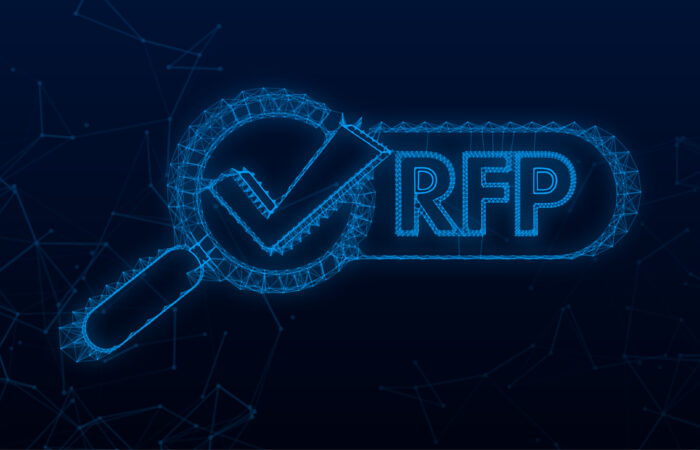Traditional post event surveys are not helping associations or attendees. Think about the ones you’ve filled out lately. No matter the event, the questions are similar and predictable. And is anyone really doing anything with all this valuable feedback? It’s no wonder response rates are disappointing.
Why haven’t post-conference evaluations changed? Because when staff are busy event planning, they don’t have time to spend on something like the survey. They end up relying on the same questions year after year. And that leads us to the bigger problem.
What do associations actually get out of their traditional surveys? They get data that’s not that useful and data that’s rarely acted upon. So why keep doing them the same old way?
Stop being predictable. Ask better post event survey questions. A revamped, well crafted survey shows your attendees you care about event success and delivering value. It also elicits useful data that helps you evaluate and improve the future event experience.
Surveys conducted before, during, and after the event serve different purposes.
Before the event, surveys help you learn about the attendee’s goals. By sending the survey within a week of the upcoming event, you put attendees in the right mindset to think about your event and what they want to get out of it—a useful exercise for them and useful data for their profile.
During the event, use your association’s event app to capture attendee feedback about the event experience or sessions—information you can act on in the moment or share with others later.
A day or two after the event, attendees have had time to reflect on their experience while their memories are still fresh. They’re ready for a post event survey—the focus of this post.
A post event survey helps you assess how well the event met everyone’s goals and how well it delivered a return on everyone’s investment.
By measuring attendee satisfaction with different elements of the event experience, such as education, networking, and the expo floor, you can see where to improve the event experience for attendees, exhibitors, and sponsors. Sounds pretty standard, right? But is your association actually doing anything with all this data you’re collecting?
Before your next event, invite staff who will use the survey data to help you design the survey. Consider asking colleagues on the event, education, membership, and marketing teams—anyone who’s involved in engaging members, prospects, attendees, sponsors, and exhibitors.
Identify the kind of survey questions that will elicit the information they need. Encourage everyone to develop a plan now for implementing what they learn from the survey. Only by going through that exercise will they know if they’re asking useful questions.
Traditional surveys ask too many irrelevant questions at the wrong time–so how do you know which post event survey question to ask?
If you want to hear detailed feedback about your event marketing campaigns or registration process, automatically send those questions right after they register. After the event, nobody will remember or care. They’ve moved on.
Your event app can help you capture attendee feedback about session content and presenters—useful information for your education team. This data helps them understand:
To enable all staff members to access and use your event app data, make sure it is integrated with your AMS. Impexium makes integrations with third-party systems easy by offering built-in baseline connectors, robust APIs, and certified Power Automate Connectors.
During the conference, ask for feedback about food and beverage, venue, and other logistics so you can resolve issues in the moment. Unless you’re returning to the same venue within a year, there’s no point wasting your attendees’ time by asking these questions in a post event survey.
Your evaluation must compete against everything else on the attendee’s plate for their time. Let them know up front how you’re doing things differently this time.
Prevent their eyes from glazing over by offering a mix of survey question types.
Data from Likert scale and multiple-choice questions is easier to work with and compare. But open-ended questions often elicit the most useful information. Use a generative AI tool to summarize and categorize open-ended text.
The disadvantage of Likert scale questions is oversimplified answers. If a session gets an average rating of 3.8, what does that really mean?
Multiple-choice questions have more granularity. Because the attendee must slow down to read each one, they are more likely to consider each option and make a more thoughtful choice. Here’s an example from Will Thalheimer, the learner evaluation guru.
Compared to most sessions, how well did this session keep YOUR attention. Select one choice.
A. I had a HARD TIME STAYING FOCUSED.
B. My attention WANDERED AT A NORMAL LEVEL.
C. My attention RARELY WANDERED.
D. I was very much SPELLBOUND throughout the session.
Notice how he uses the uppercase to focus your eyes on each answer’s differentiator. These questions take more time to craft but provide more actionable data. Attendees see that you didn’t phone it in and neither should they.
Pick from the questions below. Keep in mind, attendees are doing you a favor. Be considerate of their time and mindful of the survey’s length. Some organizations split their survey over a few days.
Tailor questions to each attendee segment so you don’t ask irrelevant questions. Ask first-timers different questions than return attendees. Ask sponsors and exhibitors different questions than attendees.
Before finalizing questions, prioritize them by data usefulness. Get rid of any nice-to-know questions. Only use questions that will give you information you need to know and will act upon.
Review questions to make sure they sound like they came from a real human being, not ChatGPT.
Did the event meet your expectations?
What aspects of the event made it a good value for your time and money? What should we definitely keep as part of the experience?
Please describe any standout moments or experiences during the event.
What aspects of the event could we improve?
Would you attend this conference again? Why/why not?
How likely are you to recommend this event to others?
Is there anything else we should have asked about? Is there anything else you want to tell us?
Which sessions did you find most valuable? Why?
Were there any topics you wish we had covered, but didn’t?
Rate your satisfaction on: (provide open-ended space for comments)
Was the expo floor missing any type of supplier? What product/service?
Rate your satisfaction on: (provide open-ended space for comment)
How could we make the trade show experience better for you as an attendee?
Which part(s) of the event provided the most valuable opportunities for networking?
Were the official networking/social events useful to you?
Did you feel there was enough space and time for one-on-one discussions? For informal group discussions?
Did you experience any barriers to networking? Please explain.
Did you feel a sense of inclusivity and belonging at the event? How could we improve the experience in that regard?
Rate your satisfaction on: (provide open-ended space for comment)
Did you attend the orientation for first-time attendees?
Did you feel a sense of inclusivity at the event?
What could we have done to make you feel more welcome?
What could we have done to help you better navigate your first event with us?
To increase the response rate, tell attendees what you will do with the data and how that will affect their overall event experience in the future. Tell them how much time the survey takes to complete—a range is fine and appears more credible. Avoid using industry or association jargon in the survey.
Ask the most important survey questions at the beginning. Save demographic questions until the end. If your survey is integrated with your association management system (AMS), maybe you don’t need to waste space on demographic questions.
Give respondents the option to remain anonymous. With the Impexium eMarketing & Survey module, survey data can be saved on the individual record or anonymously.
Take advantage of the functionality offered by your survey platform so questions are relevant to the recipient. With Impexium’s event management, you can use advanced branching, conditional questions, and AB tests. Make absolutely sure your survey is mobile-friendly.
Your survey tools should also generate reports that allow you to review and compare the results of different attendee segments.
After an attendee completes the survey, send them an automated thank-you email. Remind them about how you’ll use their feedback. Tell them to keep an eye out for your second post event survey that measures the long-term value of the event experience.
The first post event survey can’t accurately measure the impact of your conference. It’s too soon. No one’s had a chance to do anything. To see if the conference makes a lasting difference, survey them again in a few months.
This second survey demonstrates to attendees that your association cares about the long-term value of the event. Here are some sample questions.
How have you applied your new skills and knowledge?
Have you connected with new acquaintances or deepened relationships with existing acquaintances or clients? Please describe how that went.
Have you generated any qualified leads? How many?
Is there anything else you want to tell us about the impact of the event? Could we use your comments in a testimonial for future events?
Even if you don’t get testimonials, use the information you receive to help guide future marketing messaging.
In your association’s post event surveys, only ask for data you will apply to make improvements and deliver more value to attendees. A well-crafted survey shows attendees you understand they have choices when spending their money and time—and you take that investment seriously.
Contact Impexium to discover how you can start creating smarter surveys and turn your event feedback into actionable insights.

Impexium’s association management software (AMS) empowers associations to focus on what matters most—your constituents. We help you streamline operations, reduce development costs, and improve business outcomes.
Unlock exclusive insights and expertise on membership, marketing strategies, event management, and beyond. Visit our full guide library to fuel your organization's growth!
Trade associations, professional societies, and non-profits of all sizes have transformed their businesses and exceeded member expectations with Impexium’s membership management software. Request a personalized demo today.
| Cookie | Duration | Description |
|---|---|---|
| cookielawinfo-checkbox-analytics | 11 months | This cookie is set by GDPR Cookie Consent plugin. The cookie is used to store the user consent for the cookies in the category "Analytics". |
| cookielawinfo-checkbox-functional | 11 months | The cookie is set by GDPR cookie consent to record the user consent for the cookies in the category "Functional". |
| cookielawinfo-checkbox-necessary | 11 months | This cookie is set by GDPR Cookie Consent plugin. The cookies is used to store the user consent for the cookies in the category "Necessary". |
| cookielawinfo-checkbox-others | 11 months | This cookie is set by GDPR Cookie Consent plugin. The cookie is used to store the user consent for the cookies in the category "Other. |
| cookielawinfo-checkbox-performance | 11 months | This cookie is set by GDPR Cookie Consent plugin. The cookie is used to store the user consent for the cookies in the category "Performance". |
| viewed_cookie_policy | 11 months | The cookie is set by the GDPR Cookie Consent plugin and is used to store whether or not user has consented to the use of cookies. It does not store any personal data. |





